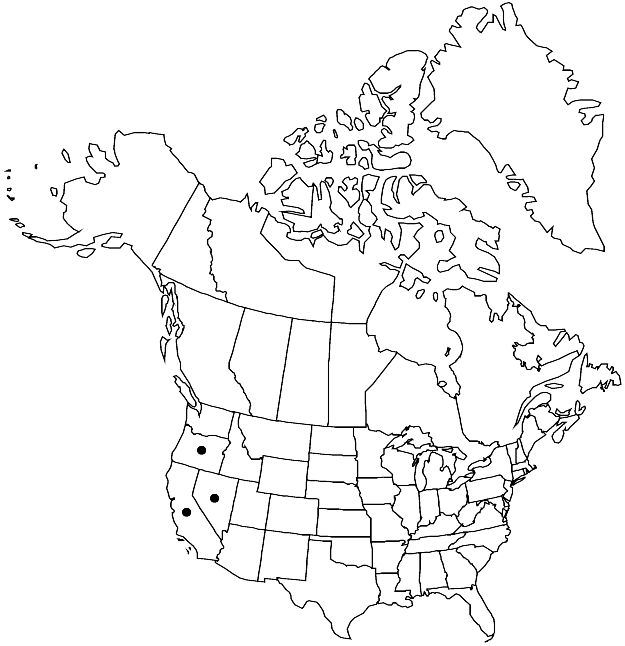Gemmabryum radiculosum
Phytologia 87: 68. 2005.
Plants small, green or yellow-green, often with reddish tinge. Stems 0.5–1 (–2) cm; rhizoids yellow-red, brown, or redbrown. Leaves loosely set, broadly lanceolate to narrowly ovate, weakly concave, 0.4–1.5 (–2) mm; base not decurrent; margins plane to revolute proximally, serrulate distally, limbidium absent; apex acute to acuminate; costa short to long-excurrent, awn slender, yellow to red; alar cells similar to adjacent juxtacostal cells; proximal laminal cells abruptly quadrate to occasionally short-rectangular, 1–2: 1; medial and distal cells 40–60 × 10–12 (–14) µm, 3–5: 1. Specialized asexual reproduction by rhizoidal tubers, on long rhizoids in soil, red to redbrown, spheric, 120–180 µm, cells 20–40 µm, smooth. Sexual condition dioicous. Capsule inclined or nutant, 2–3 mm.
Phenology: Capsules mature Apr–Jul (spring–summer).
Habitat: Dry disturbed calcareous soil, soil over rock
Elevation: low to moderate elevations (0-1500 m)
Distribution

Calif., Nev., Oreg., Mexico, West Indies, Europe, e Asia (Japan), n Africa, Atlantic Islands (Canary Islands), Australia
Discussion
Gemmabryum radiculosum is distinguished by the relatively large, reddish, spheric tubers with smooth cells, similar in color to the rhizoids, long-excurrent costa, and preference for strongly calcareous substrates. Gemmabryum subapiculatum is similar, but with red tubers that are brighter than the rhizoids, a short-excurrent costa, and a preference for acidic substrates.
Selected References
None.
Lower Taxa
"narrower" is not a number."narrow" is not a number.